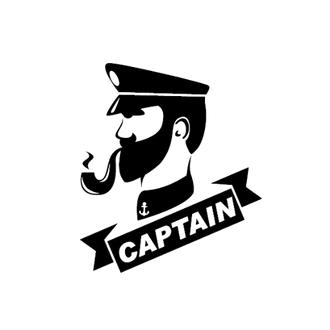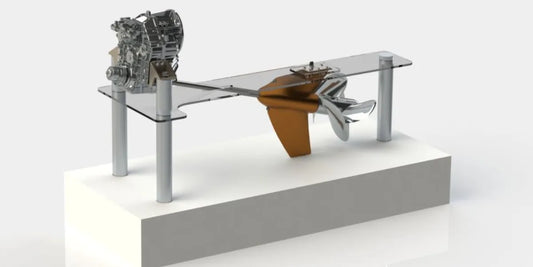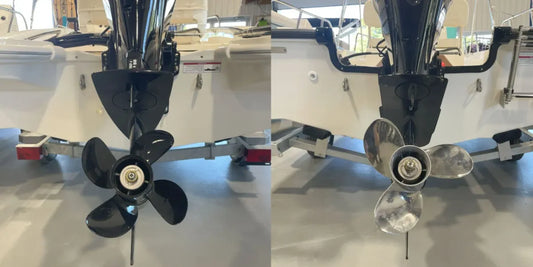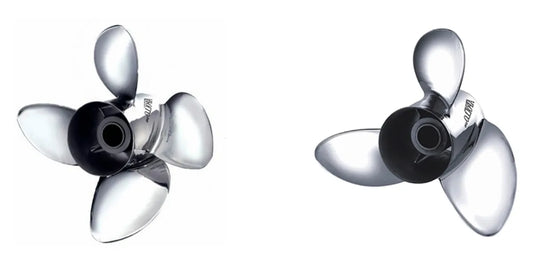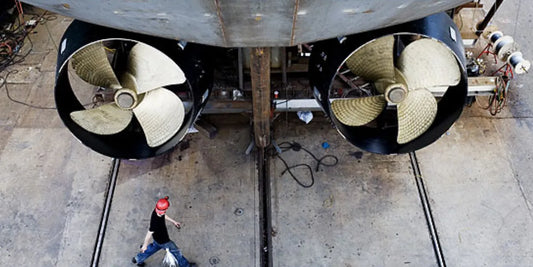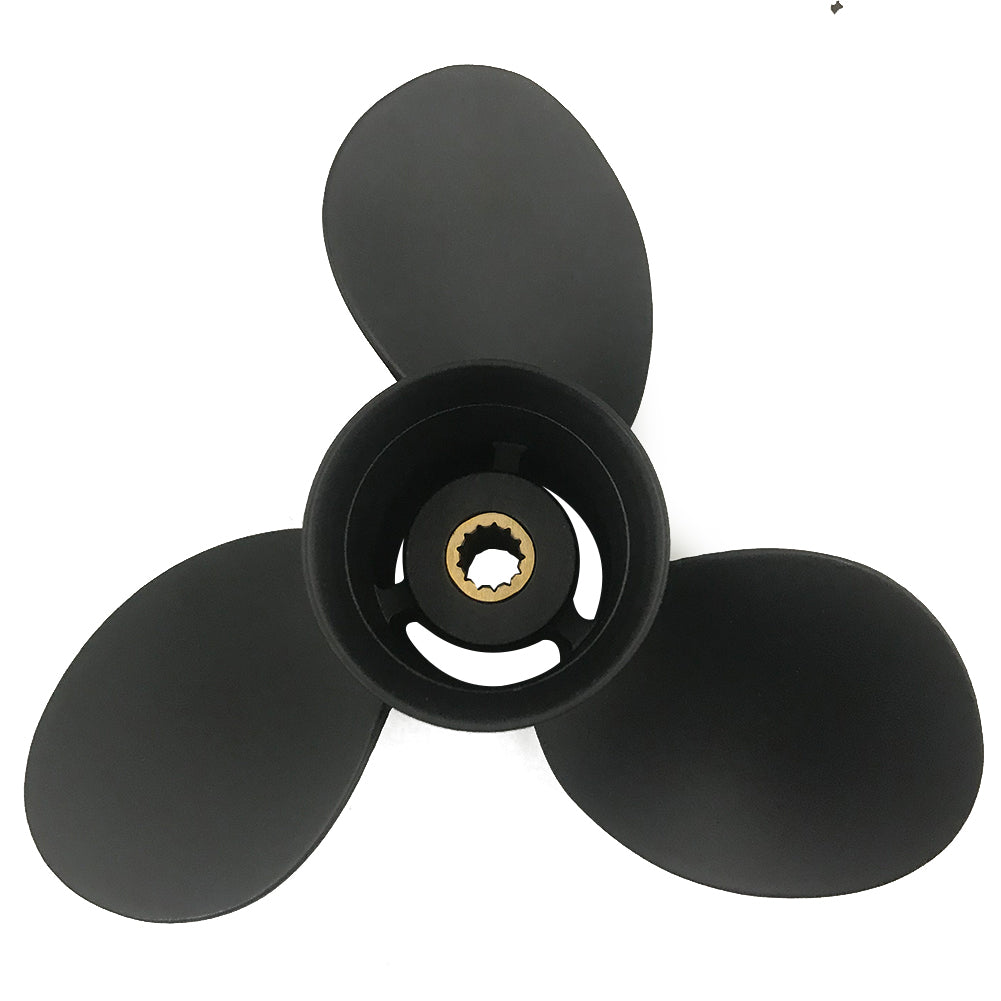It is genuinely thrilling to sail on the open sea, but safety comes first, and a crucial aspect of safety is maintaining a safe speed. Whether you operate a speedboat, a fishing vessel, or simply a pontoon for leisurely cruising, understanding the factors that determine safe speeds would protect you as well as your passengers, other vessels, and aquatic life. The following is a brief overview of the significant factors that govern your speed. Atmospheric conditions and vessel performance will be primary considerations. There's a lot to learn about these two, how they interact, and how to keep your journey smooth and safe. Let us begin strengthening your knowledge of boating so that you can sail responsibly through the waterways!
Understanding Safe Speed for Your Boat

Definition of Safe Speed
Safe speed refers to the maximum rate at which a vessel can be operated while under full control, taking into consideration the safety of life onboard, avoiding collisions with other vessels, wildlife, or anything that may pose a danger. The process of teaching a safe speed has been influenced by several dynamic factors, including weather, visibility, traffic density on the water, and sea state. Also considered are the technical capabilities of one's vessel, such as its ability to maneuver and how long it takes to come to a stop. Hence, slowed speeds must be maintained in conditions of limited visibility, whereby either fog or darkness prevails.
Regulatory authorities like COLREGs have emphasized that an operator must adjust their speed, not only for external or environmental factors, but also about the equipment, that is, radar could factor in a collision avoidance strategy. Moreover, it has been found that moderate speeds in heavily trafficked areas significantly reduce incidents. Boat operators have more time to react to unexpected situations while following the requirements for safe speed and minimizing hazards, thus providing a safer and more enjoyable environment for everyone.
Importance of Safe Boat Speed
Keeping a boating speed "safe" means taking care of the safety of those onboard and that of the others sharing the waters. Maintaining an appropriate speed will help avoid collisions as it will give the operator more time to change of their own accord or somebody will have to give way to the vessel, to react to obstructions, alterations in pattern traffic, and sudden changes in currents. Just so many more times more important to adhere to safe speeds in high traffic areas or within limits of visibility, as excessive speeds will significantly affect the operator's potential to make split-second corrections. Maintaining a safe speed and exercising operational judgment will prevent wake hazards from occurring that may affect small boats or potential swimmers in the area. These factors work together to strengthen awareness of responsibility and respect within the boating community.
Data extracted from maritime safety studies indicate that a significant number of boating accidents are related to high speeds and the failure to respond promptly to sudden environmental changes. Weather conditions, water turbulence, and vessel proximity are monitored so that operators can adjust their speed accordingly for safe navigation. Safe speed management is not only about paying fines or getting penalties in restricted zones—it is a matter of saving lives and property. By working in tandem with modern safety technologies like radar systems or GPS alerts, a sensible combination of speed management will help recognize and mitigate risk, ensuring a consistently safer boating experience.
Legal Speed Limits on Water Bodies
Typically, speed limitations are based on factors such as the waterway setting, proximity to shorelines, and the presence of swimming or other types of vessels. For example, an area might restrict the speeds of craft very close to a berth or an environmental zone under a so-called "no wake" zone. In such cases, the potential for damage should be avoided by decreasing speeds. On open waters, high speeds are allowed, but operators should always consider visibility, weather conditions, and traffic density.
Examples of enforcement include maintaining speed limits of 5-7 knots in restricted areas like harbors or locations adjacent to residential waterfronts. The punishment for offenders of the regulation ranges from fines to suspension of boating licenses. Seasonal speed restrictions are also introduced in several areas where migratory wildlife is present or high-season traffic flows.
Adhering to these laws reduces the likelihood of accidents and helps conserve the environment. Shore erosion is prevented, and disturbance to aquatic habitats is kept to a very minimum by enforcing safe speeds. Boaters should review the local laws and employ GPS-based mapping applications or speed-tracking apps that provide real-time information to help them operate safely and legally.
Factors That Determine a Safe Speed

Differences in Water Conditions and Their Influence
Understanding water conditions becomes key when deciding the speed to be safe. For example, an unstable vessel would be seriously compromised with currents, with wave height playing a somewhat prominent role. Thus, one must decide on the speed, sometimes trying to navigate the high waves of rough seas while maintaining control of the vessel with passengers on board; slower speeds may be required. Strong currents may also necessitate adjustments in speed and course to prevent drifting off track or into danger.
Water clarity is a very essential factor, as murky and shallow water increases the risk of hitting submerged objects, such as rocks, debris, or sandbars. The boaters need to stay alert for changes in water conditions, which is unpredictable due to storms or high winds. In such cases, real-time information about depth or weather alert systems helps the operator adjust to changing situations, thus making the journey safe for everyone onboard.
Weather Impact on Speed Determination
Under weather conditions are the proper ingredients for the setting of a speed safe for vessel traffic. The bad weather carries with it bad things pertinent to the setting of speed with which a vessel is able to discern the obstacles or directions toward hazard clearly. High winds and all rough weather require lower speeds to provide stability to the boat. Calm weather with clear skies allows for smooth navigation, and operators can boost their speed significantly.
Heavy rainfall initially reduces visibility as it showers down on the vessels, thereby affecting their weight and subsequently their balance. Speed manipulation would be necessary to ensure safety. Fluctuations in temperature also serve to alter the density of water and, hence, the current, which may affect speed efficiency. Operators can utilize weather alert systems and navigation aids, among other tools, enabling them to accurately assess current conditions and implement suitable speed adjustments to minimize risk and maximize efficiency during travel.
Traffic and Other Vessels: Collision Avoidance
Navigation and collision avoidance are crucial factors that ensure safe and efficient maritime operations. Multiple vectors are involved in a busy waterway, demanding extra care; hence, even minor lapses in judgment may cause damage or fatal consequences. Operators must be aware of heavy traffic, the proximity of target vessels, and their movement. Sophisticated navigation systems, combined with the use of Automatic Identification Systems (AIS), can provide operators with accurate information about other vessels in the immediate vicinity, enabling them to make informed decisions on how best to avoid collisions. Additionally, communication with other ships through radio systems ensures coordination and prevents misunderstandings, especially in heavy traffic zones.
Additionally, it is essential to comprehend the maritime traffic rules, including the International Regulations for Preventing Collisions at Sea (COLREGs). These regulations cover right-of-way protocols, speed adjustments, and minimum safe distances. In addition, operators have to practice proactive navigation by predicting conflict points, should they exist, and acting in advance to prevent risks; this would be the best practice. The use of radar and electronic chart displays can increase spatial awareness under conditions of poor visibility or cluttered waterways. Ultimately, integrating technological support with the operator's expertise leads to not only enhanced compliance with regulations but also smoother and safer maritime operations.
Operating Your Vessel at a Safe Speed

How to Know When You Are Operating at a Safe Speed
Safe operation speeds safeguard the vessel, the passengers, as well as other waterway users. Safe speed depends on environmental and mechanical, as well as situational conditions that may affect your timely reaction to avoid accidents. Visibility conditions, such as fog, rain, or darkness, may limit your field of view. It also involved judging the density of traffic adjacent to your route- if many boats, kayaks, or ships carry more traffic force, you must go at a lower speed to retain maneuvering capability.
These currents or weather conditions mean everything. With strong currents, winds, or choppy waves, the operational speed must be kept low for stability and control. For bigger craft, stopping and turning times must also be considered. Meanwhile, GPS plotters and real-time weather monitoring systems can provide an additional means of assessing how quickly operations should proceed.
Violation of any speed restriction applicable in your locale, whether it be entering into or impeding a no-wake zone, or approaching a protected wildlife area, must be avoided at all costs. Above all, the common-sense application of safe speed will center on clear awareness of the environment and utilizing real-time technology to make informed, safety-first decisions instead of rushing.
Adjusting Speed According to External Conditions
The vehicle's speed must be adapted to external circumstances to ensure safety and efficient operation. Weather conditions, visibility, traffic intensity, and water or road conditions are all essential factors in determining the appropriate speed for operation. For example, reduced visibility due to fog, rain, or inadequate lighting requires the vehicle to travel at an intermediate speed to accommodate the necessary reaction time and minimize the hazard. When navigating through an area with heavy traffic or congestion, speed must be carefully moderated to avoid collisions and maintain control.
Adjustments of operational speed are also demanded by environmental forces, with winds and rough waters being the usual suspects; these conditions impinge on maneuvering and balancing acts. On the other side are site-specific hazards, such as sharp turning angles or narrow channels, where identification and counteraction lead to a smoother journey with potentially fewer accidents. By doing so, any decisions will be informed by real-time information concerning external factors, utilizing weather updates, radar systems, and navigation sensors as primary reference tools. Thus, constant vigilance about one's ambiance and the willingness to engage in immediate changes depending on any surrounding conditions will highly guarantee safe and effective operations everywhere.
Mandatory Monitoring of Speed Limits While Boating
Adhering to speed limits at sea is a matter of safety, marine ecosystem conservation, and compliance with maritime law. Speed limits are established considering factors such as avoiding collisions, reducing shoreline erosion, and protecting aquatic life. Lower speed limits are often enforced in areas such as harbors and marinas, as well as in close proximity to swimming areas, to ensure safety for both boaters and anyone on or near the water. Exceeding such speed limits, particularly in sensitive or crowded places, at the very least, could result in penalties, including damage to the vessel or destruction of natural habitats.
The use of modern navigation and guidance systems onboard should safeguard boaters from drifting beyond prespecified speed limits. Currently, some systems offer speed monitoring, geofencing, and real-time alarms warning the operator of any encroachment into no-wake or low-speed areas. Of course, such aids are supplemented by buoys acting as visible markers and any regional silos binding the operator with clear instructions for permissible speeds on select stretches of water. Adequate speed-related professionalism goes a long way towards safe navigation and in showing appreciation for any commonly used lakes and ponds shared for environmental conservation.
Best Practices for Safe Boating

Regularly Assessing Your Boat's Capabilities
Having an understanding of and continuously monitoring being your vessel's performance is critical for a safe and enjoyable boating experience. The factors included are engine capacity, fuel efficiency, weight limits, and stability. They can greatly affect the performance of your vessel in one situation or another. By means of regular inspections, it can maximize vessel performance and minimize unwanted occurrences of a mechanical failure when you're cruising away. Talking about mechanical failures, keep a tab on scheduled engine maintenance periods, and if you hear some abnormal sound or vibrations during the operation, try sorting it out straight away. Improvements in safety will be higher when repairs are carried out preemptively rather than waiting for actual catastrophe. Also, so as to set a secure platform for your excursions, ensure that systems such as navigation aids, bilge pumps, and battery connections are in proper working order.
Environmental factors may also influence your vessel's capabilities, thus it would be wise to adjust accordingly, depending on weather conditions and water characteristics. Engaging in activities during severe waves or shallow waters offers a totally different experience than on calm lakes or deep oceans. One must always check how the boat handles different loads, such as a varying number of passengers, or carry-on gear, so as not to exceed its rated carrying capacity. Improper weight distribution or overloading would definitely reduce stability, counterproductive to the vessel, and could potentially cause capsizing or other hazards should they occur. By continuously checking performance measurements of your vessel and employing changes to suit dynamic conditions, it is a matter of life and death in respect to safety, and on the other hand, it will bring rewarding results in terms of reliability and enjoyment.
Maintaining Awareness of Surroundings
While cruising on waterways, it is imperative for any sumptuous and responsible boater to keep a constant vigilance concerning their surroundings. This would mean intermittently scanning to the surroundings for dangers such as rocks, floating debris, or other vessels to avoid any sort of collision. With that, one has to have a firm grasp of traffic patterns and must be able to differentiate between buoys and navigational signals for a smooth voyage down the sloki channels, all while adhering to marine rules. The use of contemporary navigation aids such as GPS or electronic charts can go a long way in enhancing situational awareness by confirming your exact position or by providing an overview of the area concerned. They give vital information regarding weather conditions, tides, and currents, allowing one to identify and anticipate potential hazards and make quick decisions in changing situations. These features help build a safer and more pleasurable boating experience, which requires forethought and adaptability in constantly shifting conditions.
Technology Used to Determine Safe Speeds
The technology, therefore, aids boaters by showing a safe speed adapted to the environment and conditions. Hence, from these navigation systems, vessel operators get a very comprehensive view of variable factors affecting speed-from water depth to weather forecasts and traffic in the area. Most systems come with GPS-based tools for precise monitoring of speed coupled with alerts for restricted zones, ensuring vessels comply with local regulations aimed at environmental protection. For instance, while transiting through a narrow channel or in areas that have some wildlife activity, these tools may automatically suggest reduced speed to mitigate impact on marine life and vessel safety.
Whereas onboard sensors analyze potential conditions in real-time, say wave heights, wind speeds, and underwater obstacles together with prediction analytics, these technologies will make it possible for the boater to foresee a hazard such as a sudden change in currents or maybe an underwater obstacle. A majority of these modern day boating technologies have a dashboard on which they display all of these to the boat operator in a user-friendly manner of interface-this minimizes the reaction time and helps the operator in making an informed decision. The use of these latest technologies thus enables the boater in adapting to changing conditions, which consequently makes the journey safer and more efficient.
Conclusion: Ensuring Safety on the Water

Factors Affecting Safe Speed: A Glance Back
Safe speed for a craft is one that is determined through a multitude of factors, each intertwined with the others to ensure safety and efficiency. Environmental conditions such as wind, visibility, wave heights, and currents play a critical role in the maneuverability and stopping of a vessel. Other factors determining a safe speed include the proximity of other vessels, obstacles to navigation, and the density of traffic.
More technological advances guarantee safer speed decisions. Several systems these days provide real-time information about various navigation routes, weather conditions, and potential hazards to allow for more accurate risk assessments. Also, obeying all applicable local regulations while considering the actual character of the waterway is critical in setting speeds reasonably. Thus these variations serve to emphasize environmental awareness and the technical implements, and the legislation, all combine to assure the highest safety practices on the water.
The Need for Continuous Learning in Boating Safety
I really need to carry on with my boating safety education to maintain confidence and keep proficient upon the waters. There is always something new to learn with the navigation technology, local regulations, and general safety and precautions being updated continually. Having updated knowledge makes one capable of adapting to emerging conditions and is even more capable than ever to take proactive and informed decisions. Staying abreast of ongoing learning processes protects me and anybody else whose life I am probably responsible for while in transit.
Participation in workshops and course modules on boating safety, including studies based on the new codes of practices, can go a long way in sharpening my skills. Thus, helping me prepare for any contingencies that might come about in an adverse weather situation or mechanical problem. Continuous professional development also emphasizes environmental responsibility, given that I am taught to respect marine ecosystems and do the least amount of damage to them while boating.
In essence, ensuring my education as a boat operator is a measure of how alert and responsible I am. Boating is as much about enjoyment as it is about safety, and woodworking ensures I can achieve that balance. I confidently enjoy my time on the water through continuous learning and keeping myself up-to-date while cultivating the culture of safety and preparedness.
Encouraging Responsible Boating Practices
Encouraging responsible boating, I follow the habits that might promote safety, conservation of nature, and respect of the fellow boatmen. I make sure that my boat is equipped with all necessary safety equipment such as life jackets, fire extinguishers, and a first-aid box, and quite frequently, I check for their integrity. I consider checking the weather forecast and navigating charts before setting out, so I can be modified for change in conditions, if any.
I carry a great deal of respect for the environment. That is why I am careful to avoid littering, dispose wastes properly, use products friendly to the environment and thus less harmful to marine life. Along with anchoring in designated spots and honoring no-wake zones, I help maintain fragile ecosystems and biodiversity. Awareness of my footprint is a way of giving back to help future generations preserve these waterways.
The other aspect of this is that I want to create a culture of respect and courtesy on the water: maintaining a safe speed, following maritime right-of-way rules, and showing all players--other boaters, swimmers, and wildlife--consideration. I continue my evolution by being educated in safety, legal requirements, new best practices, and evolving my approach to responsible boating, which, in my view, amplifies my interests while also safeguarding all those who share the water.
Reference Sources
-
Safe Speed
Discusses visibility conditions, wind, water currents, traffic density, and vessel proximity as key factors. -
What Is a Safe Speed?
Explains how visibility, traffic density, and vessel maneuverability influence safe operating speeds. -
What Determines If a Speed Is Safe for Your Boat
Covers wind, water conditions, vessel types, area laws, and engine capabilities as determining factors. -
Knowing When You're Operating Your Vessel at a Safe Speed
Highlights visibility, weather, vessel proximity, and navigational hazards as critical considerations. -
Determining the Safe Speed for a Vessel: Key Factors
Lists weather, water traffic, visibility, and vessel size/type as main influences on safe speeds.
Frequently Asked Questions (FAQs)
What determines a safe boat speed?
A number of factors determine the safe speed of a boat. Water conditions play a significant role with waves, currents, and shallow areas dictating how fast you can safely operate your vessel. Weather conditions also need to be taken into account, where they lower visibility-making it necessary to slow down or speed up as the conditions dictate-; fog and rain being examples. Boat traffic and the kind of boat you are operating will be considerations when it comes to determining safe speed. Being aware of other vessels and their speeds will ensure they continue on their safe course and avoid collisions. All such factors must be given due consideration when determining a safe speed for your boat.
So what is going to determine the speed at which I had to take my boat to be safe?
Certain other factors will impact the choice of safe speed to run your boat, and you must make your judgment under your boating experience and under the weather conditions and any posted speed restrictions. Once you have set out, you should look at the conditions prevailing on the water and any posted speed restrictions. You will also think about the type of boat you are speeding along in and the maximum speed it should be capable of doing. A safe speed is one at which you retain control of your vessel and in which you may take actions to avoid any hazard that may present itself. Whenever buying, local vessel traffic, and regulations should be all considered. That is how you keep things safe and enjoyable.
What are posted speed limits, and why are they important?
Posted speed limits are regulations established to allow a safe passage in an area. A critical factor to consider in the posted speed limits is one that offers sufficient time for boats and vessels to ensure their own safety. There are risks involved in boats adhering to these speed limits as they offer the minimum requirement for spacing between boats. The limits are usually set by local authorities using criteria like water conditions and boat traffic usually found in the locality. As responsible operators, boatmen should be conversant with and observe posted speed limits for the safety of everyone on the water.
What are the effects of boat traffic on the safety of navigation?
The density of boat traffic greatly influences safe navigation by determining how quickly one can operate his vessel. In heavy traffic, one should always keep at a safe speed, thereby maintaining control and reacting in time to other vessels. If one operates his vessel too fast in crowded waters, the chances of collision increase and one loses time and option to avoid them. Thus, the speed of boats should be regulated depending upon the congestion in the waterways-that is a major part of safe boating. One always has to watch and be ready to change his speed according to circumstances to have an enjoyable and safe trip in the water.
How do weather conditions factor into the decision of the speed being safe?
The weather serves as an important determinant when assessing whether a certain speed is safe for a boat. Rain, wind, or even fog certainly decrease visibility and affect how your vessel handles on the waters. In adverse weather, safe navigation means minimizing speed to maintain control. For example, in rough seas, cases arise where the speeds need to be kept low to avoid capsizing or losing control. Another important practice before starting would be checking out the weather forecast. Thus, ever-changing circumstances might force you to go faster or slower, with safety of yourself and all parties on the waters at heart.
How can I maintain a safe distance while operating my boat?
Maintaining a safe distance while passing in cruising procedure is crucial for the avoidance of collisions. To do so, a boater has to remain aware of his surroundings and be aware of the velocity of other vessels; by evaluating the speed and direction of others, one keeps an adequate distance enough to react in case the other boat changes speed or direction suddenly. Whenever there is a risk forceful interference could occur, it is advisable to adjust the speed between your boat and other boats to establish an adequate buffer zone, mainly in busy waterways. So, while working the safe route and respecting other traffic, one can maintain a safe distance. Hence, boating becomes a safer experience.
